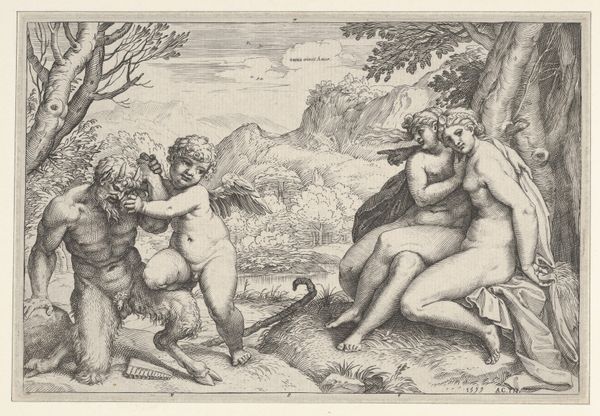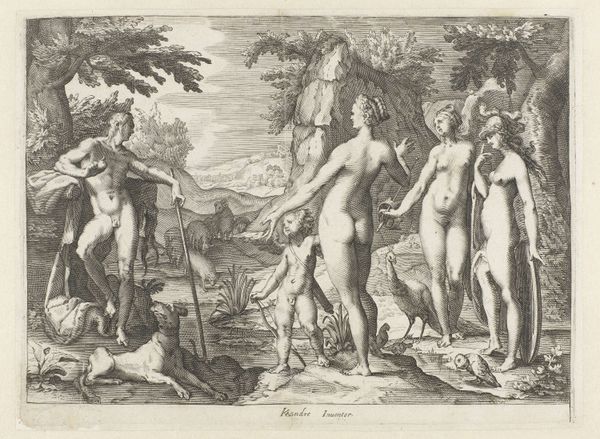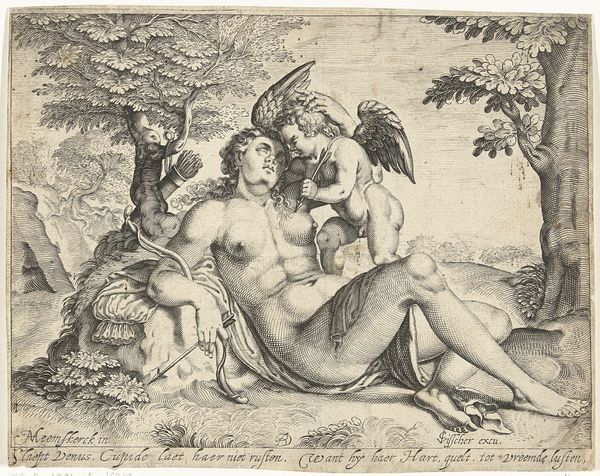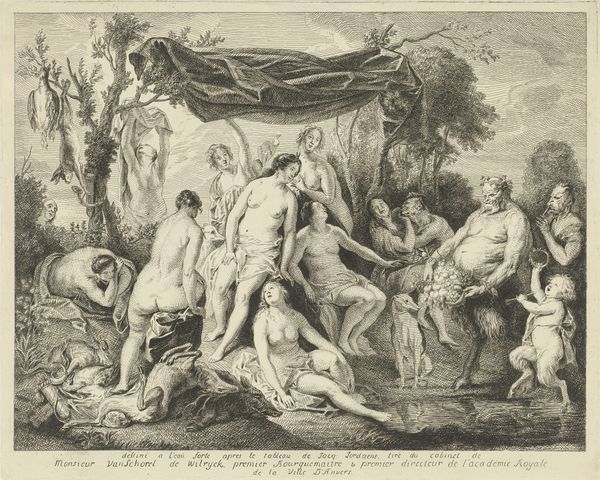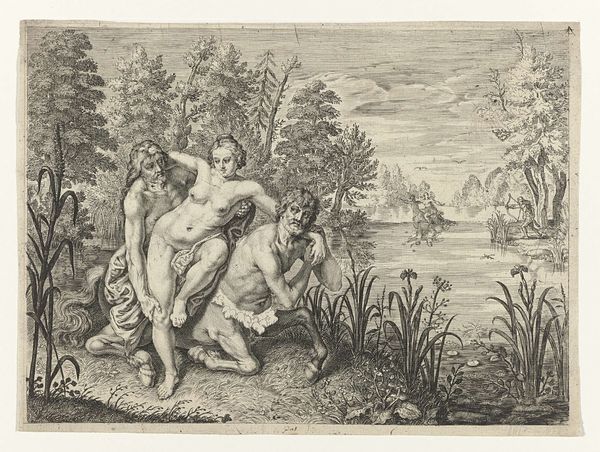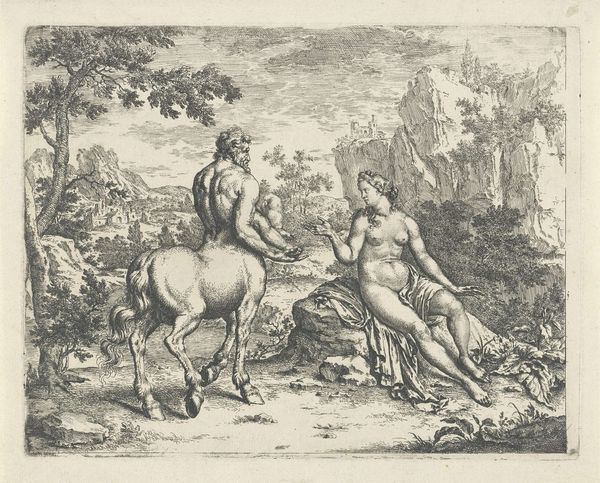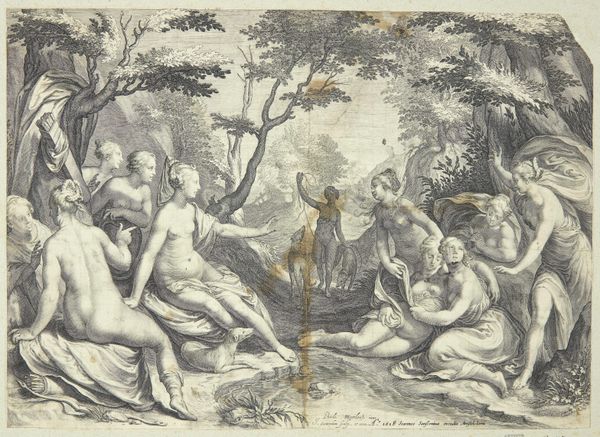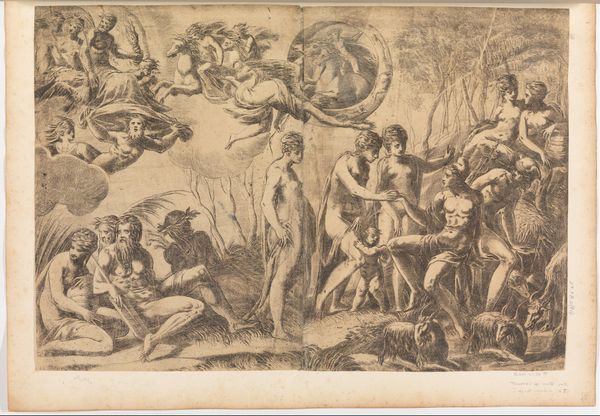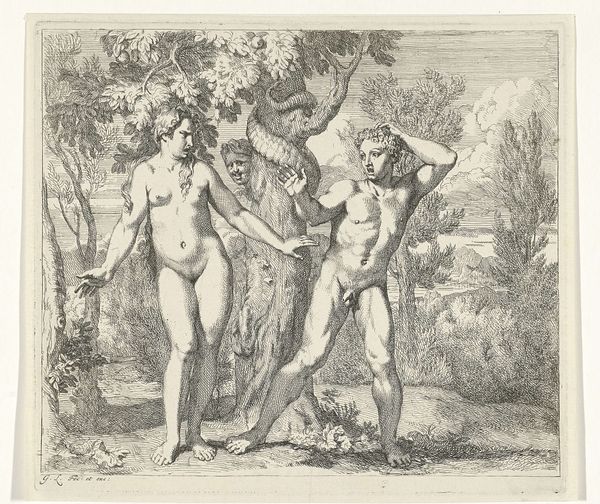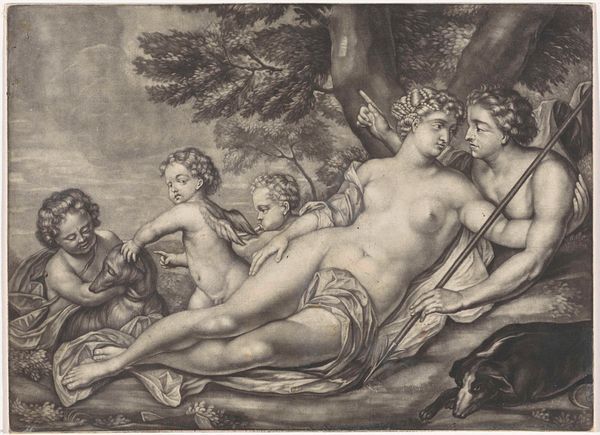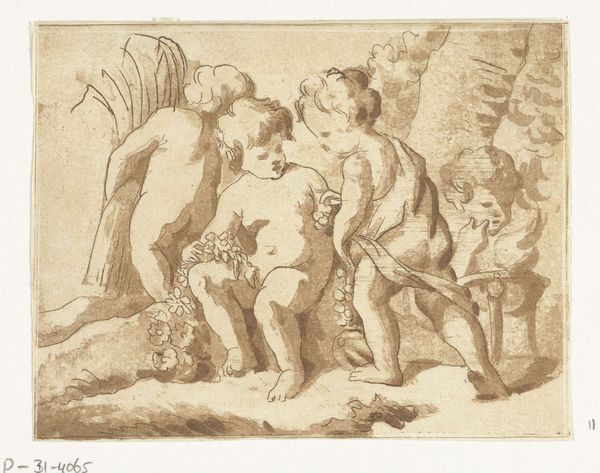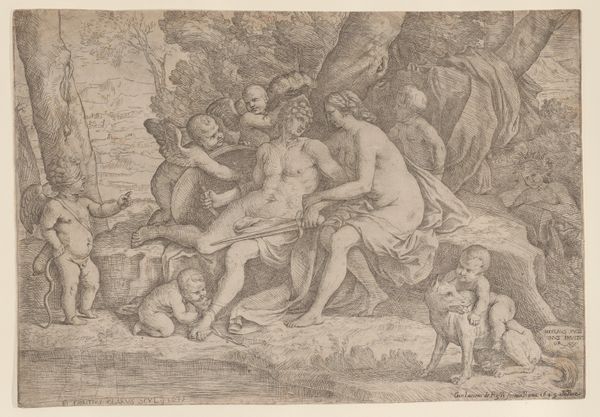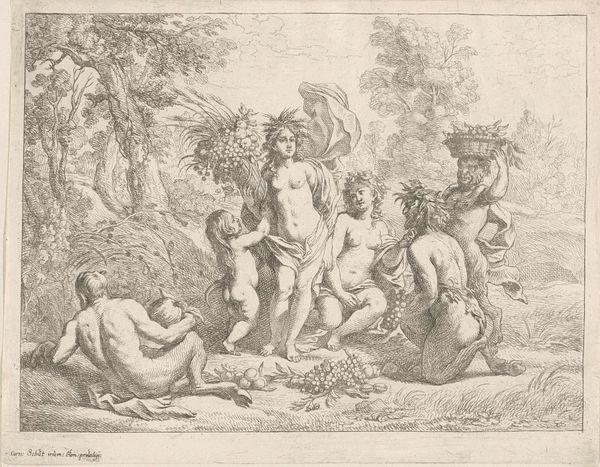
print, engraving
#
ink drawing
#
allegory
# print
#
landscape
#
mannerism
#
figuration
#
history-painting
#
northern-renaissance
#
nude
#
engraving
Dimensions: 213 mm (height) x 293 mm (width) (bladmaal)
Editor: Here we have Jan Saenredam's engraving "Diana and Callisto" from 1599. It's quite a detailed scene of nymphs bathing, but there’s a palpable tension, a sense of foreboding hangs over it all. What do you see in this piece beyond the initial classical scene? Curator: This print offers us a lens through which to examine the constraints placed upon women, particularly regarding chastity and autonomy. Look at Diana, enthroned, the arbiter of purity. Doesn't this scene scream patriarchal control disguised as divine order? Editor: So, you're saying this isn't just a depiction of a mythological story, but a commentary on societal expectations? Curator: Absolutely. Consider the story itself: Callisto, one of Diana's nymphs, is deceived by Jupiter, becomes pregnant, and faces severe consequences for her loss of virginity. It's a narrative that historically served to control female bodies and sexuality. How are the figures posed and what could it mean in this context? Editor: There seems to be judgement being passed from the rest of the bathing women. And Callisto's pose really makes the viewer's gaze fall directly on her pregnant belly, almost as if on display for judgement. Curator: Precisely! This visual emphasis highlights the shaming and objectification that women who transgressed societal norms often faced. The landscape, typically a symbol of freedom, here feels like a confined space, mirroring the limited options available to women within the social structure. Does understanding the print in this way change your view of the artwork? Editor: It definitely does. It transforms what initially seemed like a beautiful scene into a powerful critique. It becomes more of an accusation than a passive rendering. Curator: Indeed. Art like this prompts us to question the narratives we inherit and to challenge the power structures that shape our understanding of the world.
Comments
No comments
Be the first to comment and join the conversation on the ultimate creative platform.
